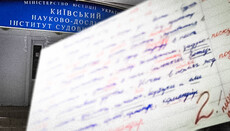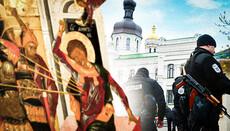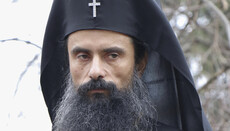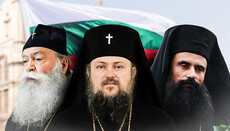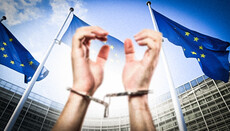We are all from Catholicism: old and new myths of Uniates
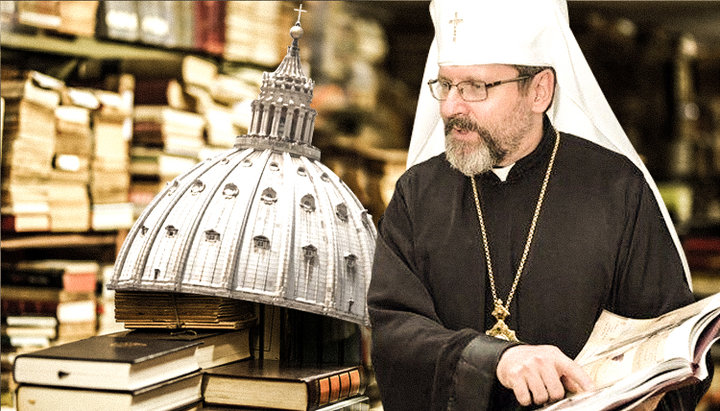
How Ukrainian Greek Catholics rewrite the history of Christianity.
Many people remember the collapse of the USSR – a painful economic crisis, the collapse of Marxist-Leninist ideology and the feverish introduction of new historical concepts. Unfortunately, the latter process was not always purely scientific in nature. The Soviet Union collapsed, but the tradition of using science for the sake of particular political expediency has not gone anywhere.
A host of Greek Catholic historians, religious scholars, writers and journalists are working hard to create and disseminate historical myths, taking advantage of the fact that modern Ukrainian historical science is guided more by the requirements of nationalist ideology than scientific objectivity.
One article is unlikely to thoroughly expose these myths, but it is simply necessary to outline some areas that historians need to work on.
Prince Vladimir and his choice
The first thing that catches your eye when studying Greek Catholic historical literature is a range of myths about the spread of Christianity in Rus.
For example, did you know that Prince Vladimir chose Byzantine rather than Western Christianity because he was afraid to become dependent on Roman popes? But the Greek Catholic priest Vasily Ivanishin, the spiritual teacher of the father of the Right Sector, Dmitry Yarosh, believes that this was exactly so:
“The essence of the choice was different, and our chronicles modestly remain silent about it: to choose the Church, which will oblige the prince to recognize spiritual and at that time tangible political dependence on its hierarch (pope) or to choose the Church, which was formed under the care of Caesar, has the habit of serving the head of state, and sees its prospects in expanding its influence and power. In 988, Prince Vladimir chose the Church, which would serve him, his intentions to strengthen the boundless, bustling Rus."
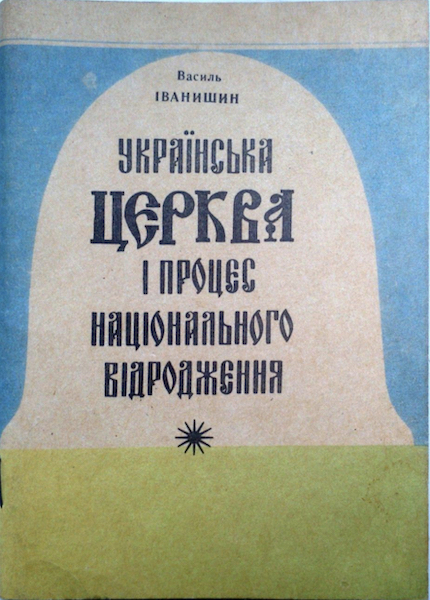
Naturally, Ivanishin, as a person who had once studied “something and somehow”, remembered the popular cliche about “Caesaro-Papism” in Orthodoxy and “Papo-Caesarism” in Catholicism. And probably, he decided to apply this "knowledge" to the choice of faith by Prince Vladimir, thinking that he was opening up a sensational truth for the "ignorant" Orthodox.
But the trouble is that his "revelation" has almost nothing to do with the 10th century!
If he carefully studied the history of the Western Church, he would know that historians called the period from 904 to 963 (that is, literally a quarter-century before the Christianization of Rus) in the history of the Roman Church an era termed Pornocracy ("the rule of harlots") when the Roman popes were appointed by influential Italian clans. And since 963, the Western Church came under the control of German kings.
As the Western historian Joseph Lynch writes, “over the next century, popes integrated into the church system of the empire, and German kings took on the right to approve their elections and sometimes even appoint them personally”.
It is fair to note that Pope John XV, who was on the Roman throne in 988, was still trying to pursue an independent policy but he did not enjoy popularity among Roman citizens for "corruption and nepotism". It was with the ambassadors of this Pope that Prince Vladimir spoke in Novgorod.
It is difficult to say what these ambassadors told him but the thing, if any, that Prince Vladimir was afraid of in relation to the Western Church was not its demands for the rulers, but exactly the opposite – its dependence on the Italian “mafia” of that time and the German kings of the “First Reich”. And he did it right: a vivid confirmation of this is that literally a few years after the Christianization of Rus, a German became the pope.
Catholic Rus
However, the main thesis of the Uniates regarding this historical period is the assertion that the Russian Metropolis was ... Catholic.
The Uniates view that if in 988 there was still no split between the Eastern and Western Church, then the Russian Metropolis of that time can be considered part of the Catholic Church.
“The Ukrainian people, having accepted the Christian faith in the Eastern, Byzantine rite (in the 9th and 10th centuries, and finally in 988) belonged to the Ecumenical (Catholic) Church, remaining in it for several centuries. Over time, they began to alienate from the unity with the Ecumenical Church, torn between East and West and falling in the 16th century under the influence of Byzantine Orthodoxy. In the years 1595-1696, Ukraine again reunited."
Such an amazing “gem” can be found in the Greek Catholic brochure written by a certain “Fr. Ivan Ortinsky”. Of course, here we are dealing with a gross extrapolation of confessional ideas to historical facts.
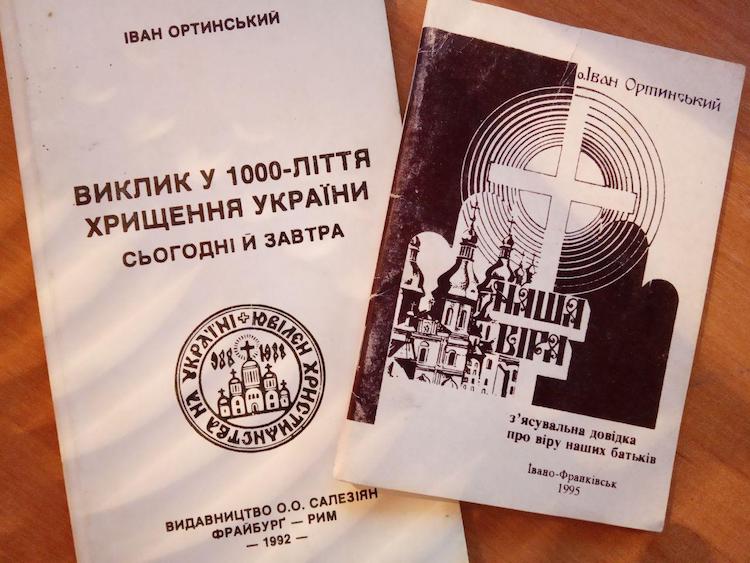
This extrapolation often occurs in a veiled form:
“At the time of Vladimir's Christianization, there was no break of unity between the Church of Constantinople and the Church of Rome yet. The newly-created Kiev or rather the Russian Metropolis was in unity with both the Mother Church of Constantinople and the Bishop of Rome,” writes the Greek Catholic historian and publicist Anatoly Babinsky.
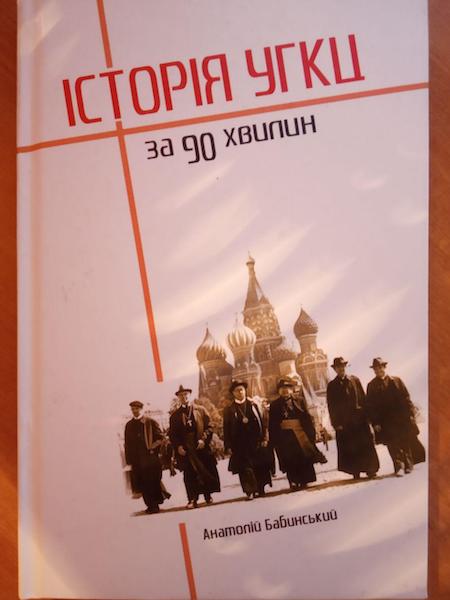
At the same time, he “forgets” to mention that the Russian Metropolis at that time was not just “in unity” with Constantinople but under its direct jurisdiction and could not take a neutral position in church matters by definition.
Moreover, it was not the Eastern Church that was in unity with the "Bishop of Rome" (this is a late Catholic concept, which implies unity with the Roman pontiff as a condition for the existence of the Church), but the Western Church was in unity with the Eastern patriarchates, which together constituted the One Catholic and Apostolic Church.
And it was not the Orthodox Greeks who initiated the schism, as Ivanishin writes about:
“The initiator of the schism was Constantinople. The Byzantine emperors were concerned about the growing influence of the Roman Church, which by the end of the first millennium had become a powerful consolidating and conditioning factor in the political life of Western Europe. To paralyze it, in 1054, the Byzantine Patriarch Michael Keroularios convened the Church Council, which cast an anathema on the Pope and his legates and forbade the Eastern Churches to communicate with Rome. Hence the division into Catholics and Orthodox, various dogmas, etc.”
Here we see a big simplification and even a direct lie. After all, it was the papal legates rather than the Patriarch of Constantinople who were the first to put anathemas and aggressively demanded submission to the pope. In any case, the reasons for the division of the Eastern and Western Churches are much more complex and cannot be reduced to a conflict between the papal legates and Patriarch Michael Keroularios. There is every reason to believe that it was the Franks who conquered the Western world in the V-VI centuries rather than Romans who were mainly responsible for the church crisis.
The Uniates view that if in 988 there was still no split between the Eastern and Western Church, then the Russian Metropolis of that time can be considered part of the Catholic Church.
By and large, the beginning of the alienation of the Latins from the One and Catholic Church can be considered the conclusion of an alliance between the Roman Throne and the Franks in the VIII century. On the part of the Latins, this was a betrayal of the previously united oecumene under the rule of the Byzantine emperors.
“Instead of continuing to be the western outpost of Byzantium, the papal Throne entered the zone of influence of the Western world, where the Franks ruled,” writes Joseph Lynch.
Thanks to the Carolingian dynasty, the reform of the Western Church and the centralization of its internal structure took place. First, Pepin the Short did this and later Charles the Great, who personally elected abbots and bishops from among his relatives and allies (which disproves Ivanishin's theory of the independence of the popes).
“As a military leader and religious reformer of Christian peoples, Charles had his own view on who the pope should work with and whom he should pray for,” Joseph Lynch recalls.
As a result, by the end of the 8th century, the popes, having felt the political support of the Franks and being under their influence, began to put forward their conditions and insist on supremacy in the Christian world.
In turn, the Franks themselves considered the Western Church as a tool in the political confrontation with Byzantium. Charles the Great was the first to accuse the Greeks of heresy, rejecting the decisions of the VII Ecumenical Council (the Second Council of Nicaea) at the Local Council of the Western Church in Frankfurt am Main (794). There, for the first time, the question of the Filioque was raised as a contrast to the expression of the Eastern Romans "the Holy Spirit proceeds from the Father through the Son".
Therefore, when Catholic or Uniate historians claim that the "evil" Greeks "found fault" with the Latins because of the Filioque, this is not true. In fact, it was Western theologians of that time who aggressively demanded that Eastern Christians accept their version of the Creed. And the negative reaction to theological innovations was quite natural.
In our opinion, domestic historians need to study in more detail the role of the Franks in the process of the gradual defection of Western Christians from the Church. Here we can recommend translating into Ukrainian or Russian lectures by the Greek theologian John Romanides, collected in the work “Franks, Romans, Feudalism and Doctrine”, in which he analyzes in detail the underlying causes of the schism in 1054.
The central thesis of his historical concept can be considered the following phrase: "The split between Eastern and Western Christianity was not a schism between Eastern and Western Romans, but a division between Eastern Romans and the conquerors of Western Romans."
This means that the papacy and the Catholic model of the church structure is nothing more than the result of the political influence of the Franks on Western Christians.
In any case, Orthodox scholars of the history of ancient Rus can find ample opportunities here for using the comparative-contextual method in polemics with the Uniates.
From monographs to comics
The examples mentioned are only a small part of a fairly large-scale Greek Catholic mythology.
Impressive is the abundance of different formats, through which supporters of the UGCC or OCU impose their point of view on the history of the Church in Ukraine: these are thick folios, and small books, historical studies and philosophical reflections, five-minute documentaries and even cartoons with comics!
The intensive editorial work of Greek Catholic and schismatic propagandists on Wikipedia deserves special mention. And this is one of the most popular sources of information for people looking for information about certain historical events.
When Catholic or Uniate historians claim that the "evil" Greeks "found fault" with the Latins because of the Filioque, this is not true. In fact, it was Western theologians who aggressively demanded that Eastern Christians accept their version of the Creed.
And this is not all: passing through Kiev, you may find that one street has been recently renamed after the former head of the UGCC Lubomir Huzar, who smiles at you from the poster. And when you open the “Book Club” catalogue, you will see an advertisement for a new fiction novel by a Western Ukrainian writer dedicated to the Unia.
For any Orthodox, this should cause some discomfort and a feeling of bitterness. Can’t we create our own view of the history of Christianity in Ukraine in a traditionally Orthodox country and actively disseminate it in forms acceptable to us?
After all, as you know, the holy place is never empty. And if we do not "weed" the myths in the field of science, journalism and Wikipedia, it will be filled with distorted ideas about the history of Orthodoxy and Christianity as a whole.
